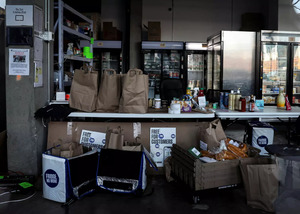Instacart building micro-warehouses in an attempt to resurrect delivery edge
Synopsis
Instacart, the leading grocery delivery platform, will plan something bigger with Instacart micro-warehouses. Here, all grocers will access the company’s platform with all supports of warehouse logistics, advertising technologies, and data analytics.
 Reuters
ReutersInstacart, the renowned delivery service platform, is planning to build its own micro-fulfillment warehouses as it strategizes to ward off the double challenges raised by Amazon’s fast aggression in the grocery sectors and several newly-built delivery apps.
Instacart runs its operations by hiring gig workers who pick up groceries from different brick-and-mortar stores located in different places. In their planning of Instacart micro-warehouses, the company will add a broader pivot to become a massive platform where all retailers, warehouse logistics, advertising technologies, and data analytics will come into a single umbrella to get the facility of supply chain service. The company’s expansion plan has been confirmed by Fidji Simo, the chief executive of Instacart.
Simo also added that the move would be Instacart’s ‘new trajectory’ as it aims at building something fundamentally different from the usual way most investors have been viewing them.
The leading online grocery platform in North America will release its first rapid-delivery deal taking advantage of the tie-up with Florida-based grocery chain Publix, which will be available online in upcoming months. At the initial stage, customers from Miami and Atlanta can avail the service by Instacart.
Along with the warehouses, there will be other significant services, including data insights, advertising, and in-store techs like ‘smart’ trolleys, widely known as Instacart Platform.
The initiative of Instacart micro-warehouses is an attempt to overcome hundreds of thousands of different challenges faced by grocers due to massive digital transformation. The company is expecting to provide the platform with modular yet persistent support of technology to all grocers so that they will compete with Amazon.
According to PitchBook’s data, Instacart raised over $2.7bn in venture capital funding, which made its valuation $39bn in its latest round in March 2021. The company was expected to go public in 2021 after the last rounds. However, there is no such update about the IPO at present.
Disclaimer: This content is authored by an external agency. The views expressed here are that of the respective authors/ entities and do not represent the views of Economic Times (ET). ET does not guarantee, vouch for or endorse any of its contents nor is responsible for them in any manner whatsoever. Please take all steps necessary to ascertain that any information and content provided is correct, updated and verified. ET hereby disclaims any and all warranties, express or implied, relating to the report and any content therein.
(Catch all the Business News, Breaking News Events and Latest News Updates on The Economic Times.)
Download The Economic Times News App to get Daily Market Updates & Live Business News.
…moreless
ETPrime stories of the day

